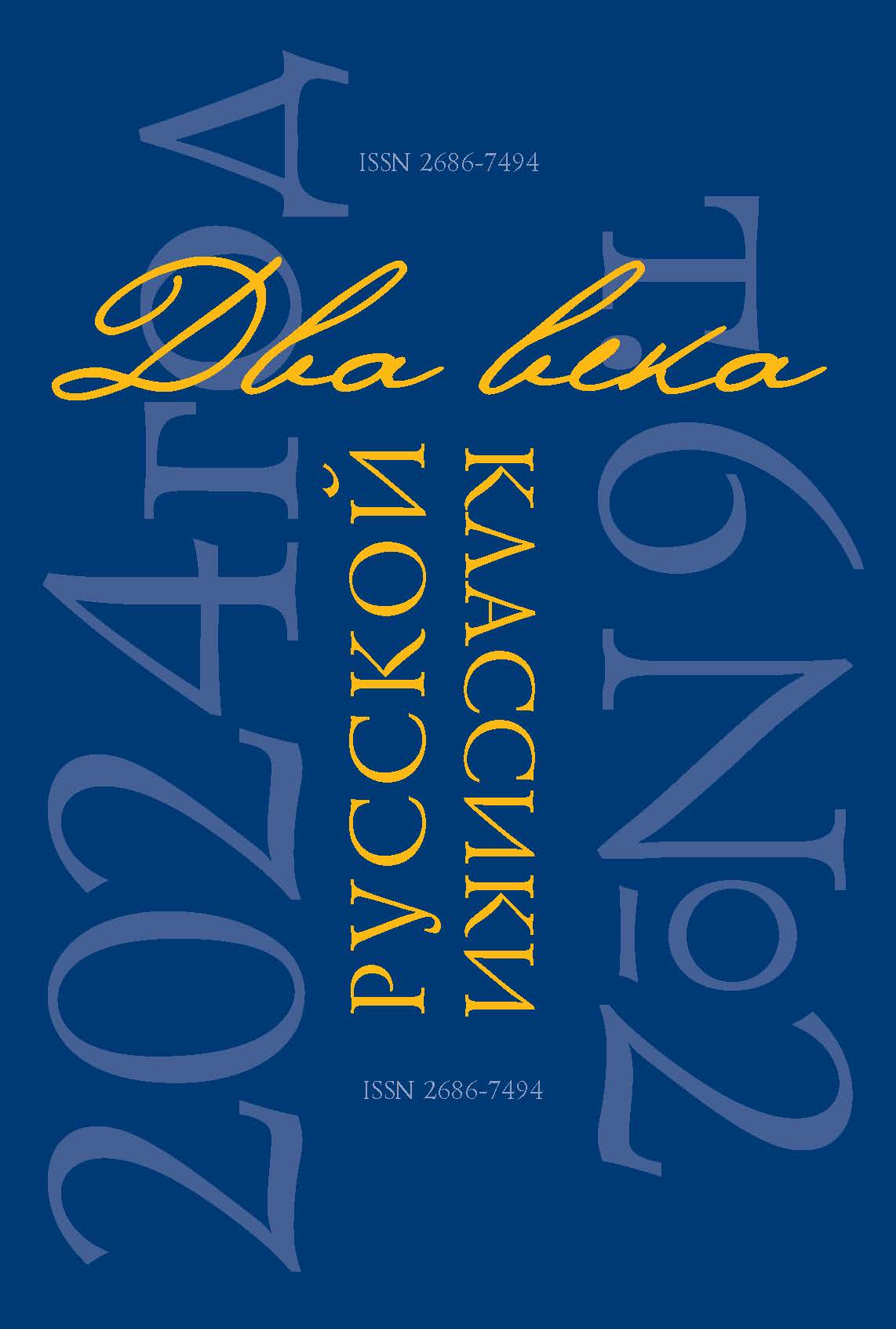Abstract:
The focus is on the story Murder which occupies a special place in Chekhov’s work (this manifests itself at the level of the central plot line, in an emotionally expressive style unusual for the writer (murder scene), in the motif of the protagonist gaining true faith, in spatial remoteness of scenes from the “big” world, in the gloomy coloring of the narrative). At the same time, the author of the article shows that thanks to a number of features — the poetics of repetition, the unobvious commonality of the characters conflicting with each other, the difficulty of their communication, the presence of typically Chekhov themes and words, the author’s axiology — Murder organically fits into boundaries of the writer’s artistic world. As a result, dialectics of the familiar and the new arises, when the familiar, typical of other Chekhov’s works, is interwoven into a new problem, theme and plot construction.
References
Bitsilli, P. M. “Tvorchestvo Chekhova. Opyt stilisticheskogo analiza” [“Chekhov’s Works. An Attempt of Stylistic Analysis”]. Bitsilli, P. M. Tragediia russkoi kul’tury: issledovaniia, stat’i, retsenzii [The Tragedy of Russian Culture: Studies, Articles, Reviews]. Moscow, Russkii put’ Publ., 2000, pp. 204–348. (In Russ.)
Kapustin, N. V. “Chuzhoe slovo” v proze A. P. Chekhova: zhanrovye transformatsii [“Alien Word” in A. P. Chekhov’s Prose: Genre Transformations]. Ivanovo, Ivanovo State University Publ., 2003. 262 p. (In Russ.)
Kapustin, N. V. “Povtory” [“Repetitions”]. A. P. Chekhov. Entsiklopediia [A. P. Chekhov. Encyclopedia], comp. and sci. ed. by V. B. Kataev. Moscow, Prosveshchenie Publ., 2011, pp. 282–285. (In Russ.)
Kapustin, N. V. “Proshloe, nastoiashchee i budushchee v drame A. P. Chekhova ‘Tri sestry’ i v tvorchestve V. A. Zhukovskogo” [“Past, Present and Future in A. P. Chekhov’s drama ‘Three Sisters’ and in the Work of V. A. Zhukovsky”]. Anton P. Česhov — der Dramatiker. Munchen, Berlin, Washington, 2012, pp. 294–300. (In Russ.)
Kapustin, N. V. “Soiuz ‘no’ kak sputnik chekhovskogo geroia: (na materiale rasskaza ‘Dama s sobachkoi’)”. [“Conjunction ‘But’ as a Companion of the Chekhov Character: (on the Material of the Story ‘The Lady with the Dog’)”.] Russkaia rech’, no. 5, 2020, pp. 111–119. (In Russ.)
Kataev, V. B. Proza Chekhova: problemy interpretatsii [Chekhov’s Prose: Interpretation Issues]. Moscow, Lomonosov Moscow State University Publ., 1979. 326 p. (In Russ.)
Lapushin, R. E. Ne postigaemoe bytie…: opyt prochteniia A. P. Chekhova [Incomprehensible Being ...: an Attempt of Reading A. P. Chekhov]. Minsk, Propilei Publ., 1998. 120 p. (In Russ.)
Polotskaia, E. “Anton Chekhov” [“Anton Chekhov”]. Russkaia literatura rubezha epokh (1890-e – nachala 1920-kh gg.) [Russian Literature at the Turn of the Era (1890s–Early 1920s)], book 1. Moscow, IWL RAS Publ., 2001, pp. 390–456. (In Russ.)
Chudakov, A. P. Poetika Chekhova; Mir Chekhova: vozniknovenie i utverzhdenie [Poetics of Chekhov; Chekhov’s World: Emergence and Assertion]. St. Petersburg, Azbuka-Attikus Publ., 2016. 704 p. (In Russ.)









